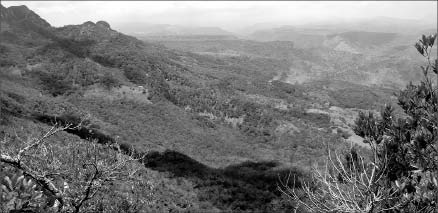Junior Goldgroup Mining (GGA-T) believes it can produce much more gold within three years through organic growth by combining its Mexican assets, and Canaccord Genuity mining analyst Nicholas Campbell thinks that goalis on the mark.
Campbell has initiated coverage of the company with a “speculative buy” rating and forecasts the company growing from 22,000 oz. production currently to 97,000 oz. gold in 2013, with contribution from Caballo Blanco; 137,000 oz. in 2014, with contribution from San Jose de Gracia; and 157,000 oz. in 2015 through the ramp-up of the San Jose de Gracia operation. He also estimates total cash costs will fall from US$1,078 per oz. this year to US$545 per oz. in 2015.
Caballo Blanco, 65 km northwest of Veracruz and Mexico’s largest port city, is Goldgroup’s flagship asset and is envisioned as an open-pit, run-of-mine heap-leach operation.
The company expects to complete a preliminary economic assessment by June and is at work on a 30,000-metre drill program to expand the resource estimate at the La Paila anomaly during the last months of 2011.
The La Paila deposit has indicated resources of 6.7 million tonnes grading 0.65 gram gold per tonne for 139,000 oz. contained gold, plus inferred resources of 27.6 million tonnes grading 0.58 gram gold for 517,000 oz. gold.
Goldgroup says it is targeting an updated resource “sufficient to sustain 100,000 oz. gold production a year starting in the second half of 2012.” Campbell of Canaccord forecasts capital expenditure of US$60 million for a 20,000 tonne-per-day operation producing 107,000 oz. gold per year at average cash costs of US$521 per oz. He estimates production could start in late 2012.
Meanwhile, Goldgroup is working on a revised resource estimate for a 50%-owned San Jose de Gracia project that it expects to finish before October, with a preliminary economic assessment completed in 2012. Goldgroup forecasts San Jose de Gracia will start production as an underground operation in the second half of 2013.
The high-grade advanced gold project in northeastern Sinaloa, 120 km northest of the city of Los Mochis, has an inferred resource of 3.4 million tonnes grading 5.6 grams gold for 618,000 oz. contained gold at a cut-off grade of 2 grams gold per tonne. “These resources should be sufficient to support a 1,500 tonne-per-day underground mining operation over a six-year mine life,” Campbell notes.
Goldgroup’s 100%-owned Cerro Colorado open-pit mine in northern Sinaloa is expected to produce gold for another five years, with the company forecasting 25,000-oz. production this year. The mine started producing gold in 2003. Gold is produced in doré and then shipped to a refiner in the U.S. for final processing.
“In the current gold price environment, the Cerro Colorado mine provides some operating cash flow [with an estimated US$4-11 million in annual free cash flow over the remainder of the mine life], which provides working capital to pay for corporate overhead and finance some exploration and development,” Campbell states.
The property consists of six mineral concessions covering the mine area and 44 concessions in the immediate vicinity totalling 338 sq. km. Exploration drilling around the mine site is underway.
Over the course of his 30-year career in the industry, Keith Piggott, Goldgroup’s president and chief executive, has launched two gold mines in Mexico. He initially made his mark developing mining systems as a mine superintendent in Zambia’s copper and cobalt mines at Luanshya, Chibuluma, Chambishi and Kalengwa. He then operated an exploration company in Australia and Papua New Guinea and helped identify the gold cap of the Ok Tedi copper orebody, which was then dealt to BHP Billiton (BHP-N), Goldgroup states on its website. He has also started and produced, mostly through companies he has controlled, a number of gold-silver, tin, tungsten, rutile-zircon open-pit and heap-leach mines in Mexico and Australia. For the last 12 years Piggott has focused on gold production in Mexico and elsewhere in Latin America.
Goldgroup has US$40.8 million in cash and equivalents and no long-term debt. According to Canaccord, its largest institutional shareholders are: Ruffer LLP, 5.5%; Sceptre Investments, 4.2%; Sprott Asset Management, 3.2%; Mackenzie Financial, 2.8%; May Investment Advisors, 1.1%; and Well Capital, 1.1%.
At presstime Goldgroup traded at $1.42 per share, within a 52-week range of 68¢ and $1.67 per share.
Campbell has a 12-month price target on the stock of $2.50 per share.
“As investors recognize Goldgroup’s growth profile, its valuation should begin to catch up with the peer group average,” he wrote, noting that Goldgroup is trading at 0.40 times P/NAV with a 5% spot and 2.1 times 2013 estimated cash flow per share, versus the junior producer average of 0.76 times and 8.8 times 2013 estimated cash flow per share.


Be the first to comment on "Goldgroup Mining’s big growth plans in Mexico"